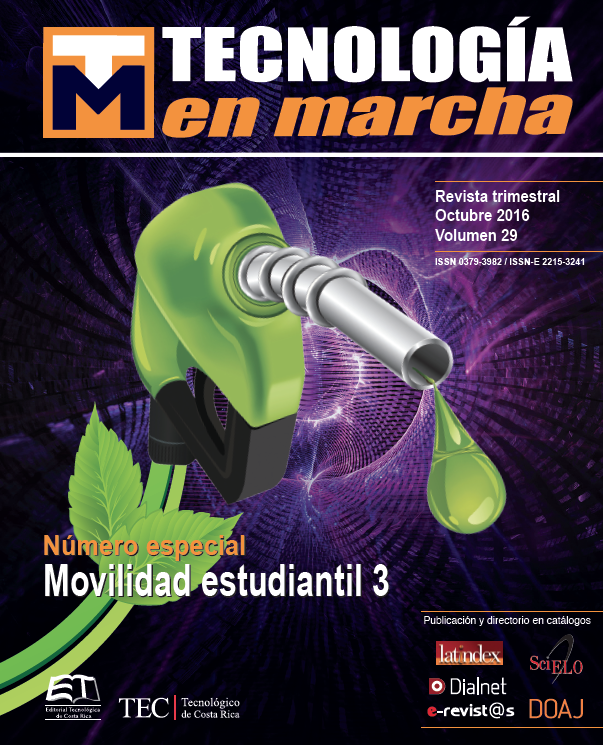Study of morphological and phisiological characteristics of Chlorella protothecoides oriented to lipid production for biofuel
Main Article Content
Abstract
The microalgaes have an enormous potential as energetic source, though the massive production of biodiesel has really high costs, which make the system not sustentable. There exist low costs alternatives that involve auto- and heterotrophic crops to improve the performance; however, not all microorganisms have the same capacity that Chlorella protothecoides has to grow just with a nitrogen or carbon source. To study its morphology and physiology, C. protothecoides was cropped autotrophically and heterotrophically in glass bubble column bioreactors with constant airflow. The control of variables was done through multi-parametric flow cytometry using Propidium Iodide and Nile Red. The results showed that the microalgaes in their growing phases have different sizes, cellular content and lipid concentration, with a maximum of 24.5% w/w of lipid acids and 4.5 g/l of biomass. There was also observed that in the heterotrophic growth, the cells lose their chloroplasts and their photosynthetic capacity, increasing the efficiency in the production of lipid acids.
Article Details
Los autores conservan los derechos de autor y ceden a la revista el derecho de la primera publicación y pueda editarlo, reproducirlo, distribuirlo, exhibirlo y comunicarlo en el país y en el extranjero mediante medios impresos y electrónicos. Asimismo, asumen el compromiso sobre cualquier litigio o reclamación relacionada con derechos de propiedad intelectual, exonerando de responsabilidad a la Editorial Tecnológica de Costa Rica. Además, se establece que los autores pueden realizar otros acuerdos contractuales independientes y adicionales para la distribución no exclusiva de la versión del artículo publicado en esta revista (p. ej., incluirlo en un repositorio institucional o publicarlo en un libro) siempre que indiquen claramente que el trabajo se publicó por primera vez en esta revista.

